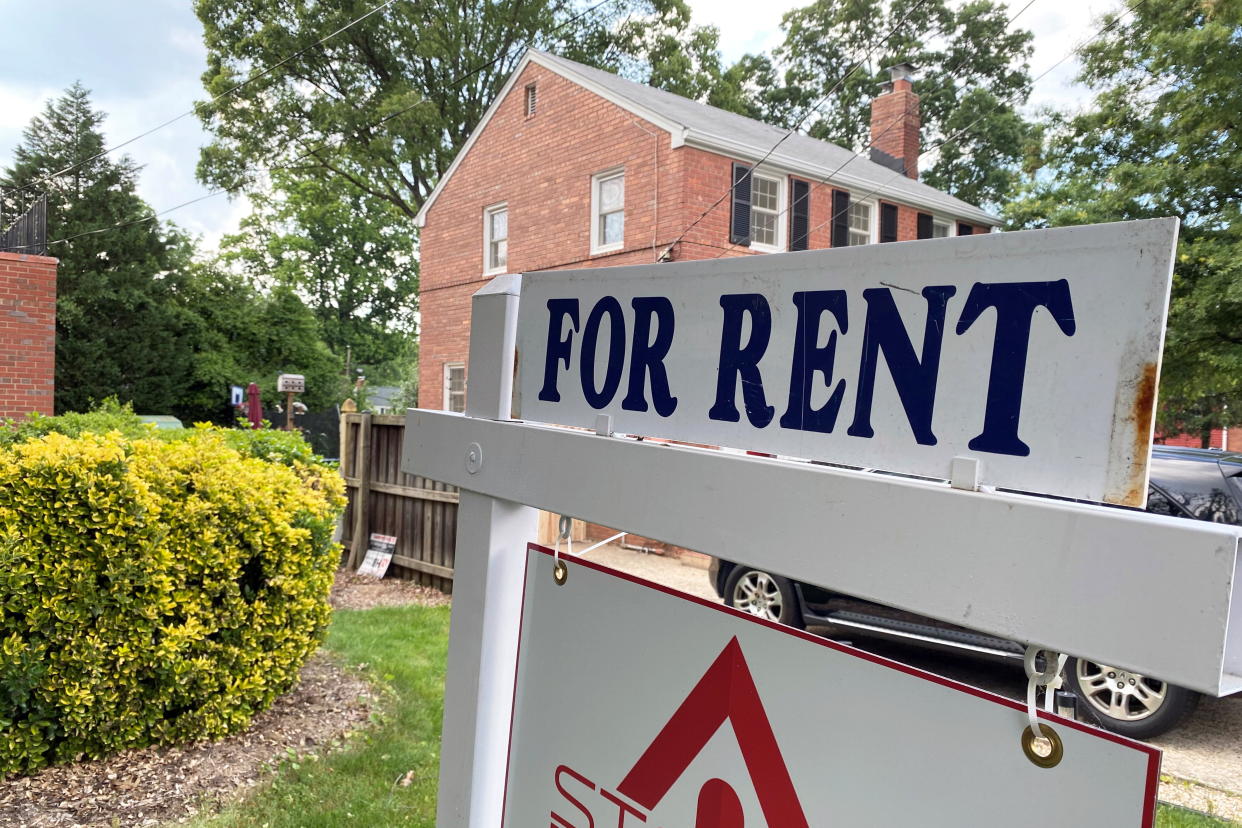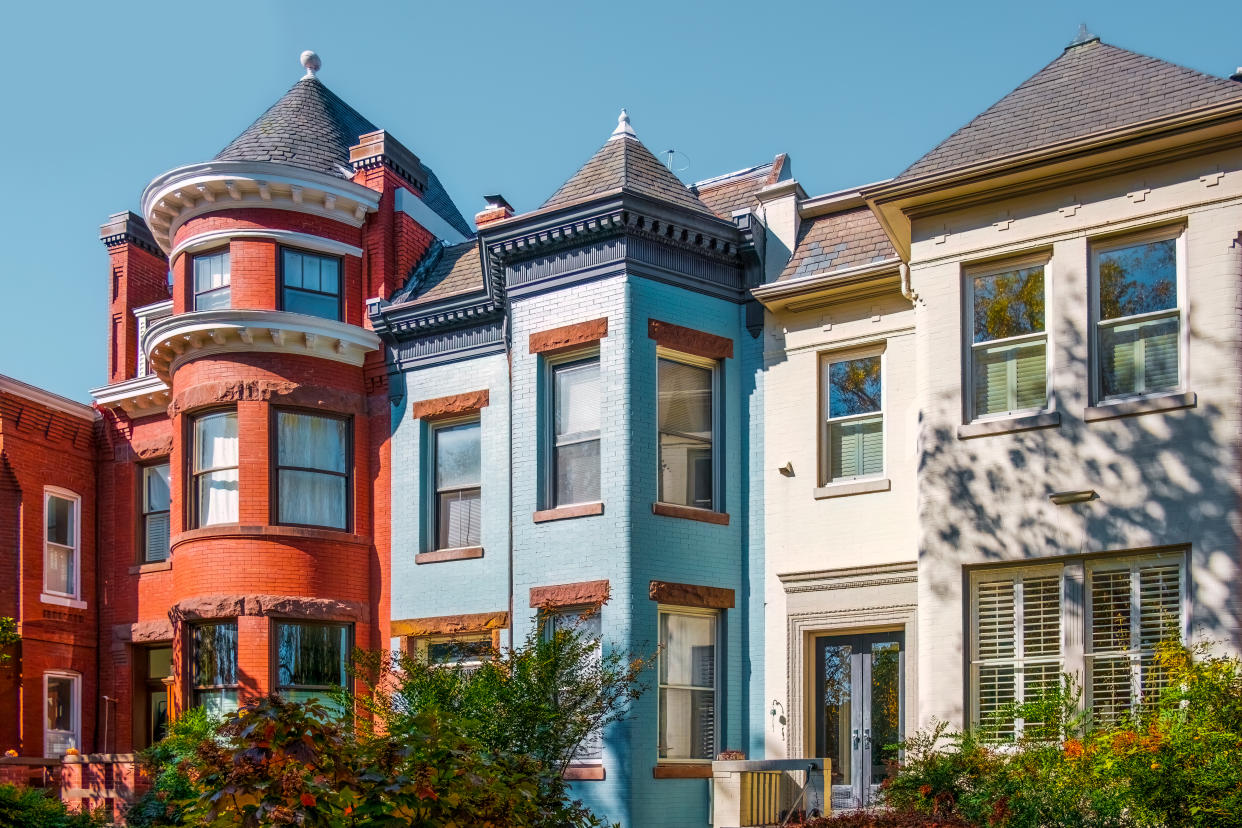Housing costs are a big driver of inflation — for now
Housing costs were by far the largest reason behind July's inflation, but that may soon moderate when the measure finally reflects cooling rental prices.
The shelter component of the July Consumer Price Index (CPI) — which makes up a third of the overall CPI index — rose 0.4% over the month, the same increase as in June. On a yearly basis, the component increased 7.7% in July.
The shelter index was the largest contributor to overall inflation, which rose 0.2% in July, accounting for an over 90% increase for all items, according to the Bureau of Labor Statistics report out Thursday.
The index for housing costs, though, doesn't reflect what's happening on the ground now for consumers because the data it uses is a backward-looking indicator rather than a real-time one.
"Though shelter inflation is sticky, the CPI lags market rents by roughly a year. Therefore, we know that the CPI for shelter is set to moderate noticeably through the remainder of this year," Ryan Sweet, chief US economist at Oxford Economics, wrote in a note following the release.
The shelter index consists of rent prices, which increased 0.4% from June, and what it would cost a homeowner to rent an equivalent residence — known as owners' equivalent rent — which advanced 0.5% over the last month.
"We're clearly past peak inflation on the housing front with shelter cost inflation showing a gentle easing from 8.2% year over year in March to 7.7% year over year in July," EY-Parthenon senior economist Lydia Boussour wrote. "Housing disinflation will pick up momentum in the coming months."
For instance, Zillow reported that the typical asking rent nationwide increased 3.6% over a year ago, "continuing a steady, 17-month-long slowdown in the annual growth rate since hitting a record-high 16.2% in February 2022."
That trend echoes data from RealPage Market Analytics, which showed an even cooler year-over-year rate of rent growth below 1%, the lowest since July 2010 and signaling a potential drop into negative territory over the next months.
A lot of the deceleration has to do with more rental supply coming onto the market.
"We continue to see apartment demand bounding back nicely after a weak 2022. But we’re also seeing a multi-decade high in new supply," Jay Parsons, chief economist for RealPage, wrote in a note. "So supply is doing what it's supposed to do – putting downward pressure on pricing."

Eventually, though, the year-over-year comparisons won't be as favorable, Parsons noted.
"That math starts to change going forward, as rents dropped much more than seasonal norms between September 2022 to December 2022," he wrote. "That suggests, in turn, the year-over-year change numbers should drop off again in August and maybe September before leveling off (to some degree)."
Another potential issue also came up in Zillow's report. The median asking rent climbed by $10, or 0.5%, from June to July.
"This marks the first month of above-average rent growth after eight months of below or at average pace, by seasonal standards," Jeff Tucker, senior economist at Zillow, wrote on Tuesday when the data was published.
"Whether this is just a bump in the road for a market re-calibrating back to normal seasonal appreciation, or an early sign of nascent re-heating, won’t be clear until we see more data in the months to come."

It's also way too early for that increase to factor into CPI, which still needs to capture the slowdown in rental growth over the past year.
New research from the Federal Reserve Bank of San Francisco forecasts that shelter inflation is set to ease considerably and may even collapse by next year.
"Our baseline forecast suggests year-over-year shelter inflation will continue to slow through late 2024 and may even turn negative by mid-2024," San Francisco Fed economists Augustus Kmetz, Schuyler Louie, and John Mondragon wrote in a note published Monday. "This would represent a sharp turnaround in shelter inflation, with important implications for the behavior of overall inflation."
Researchers in the Fed study used several housing indexes to forecast the shelter component of CPI. The results show that the Fed’s tightening campaign has made its impact.
Read more: What the Fed rate hike means for mortgage rates, CDs, loans, and credit cards
"The rapid rise in interest rates since early 2022 is likely to have had a significant effect on slowing housing markets, and this slowdown is likely to continue going forward," they wrote.
More Yahoo Finance inflation coverage:
Stocks climb as inflation ticks up but trends stay positive: Stock market news today
Inflation: Consumer prices rise 3.2% in July as inflation slowdown stalls
San Francisco Fed’s Daly: 'There’s still more work to do' on inflation
July inflation data shows 'convincing' signs price pressures easing, taking heat off Fed
Inflation: Grocery prices are back up (slightly), beef prices jump
July CPI report: Monthly inflation falls in line with estimates, rises by 0.2%
Inflation moderating, Disney earnings, Alibaba revenue: 3 Things
—
Dani Romero is a reporter for Yahoo Finance. Follow her on Twitter @daniromerotv.
Read the latest financial and business news from Yahoo Finance
